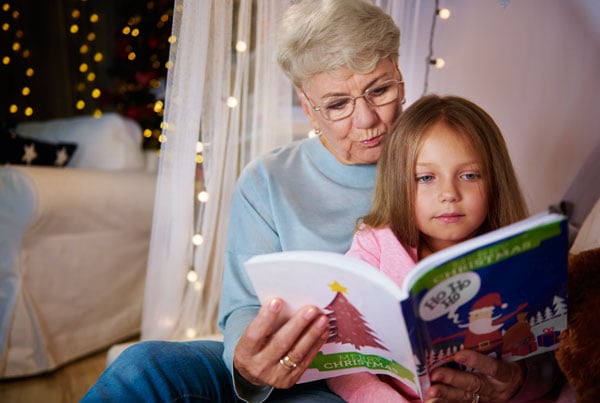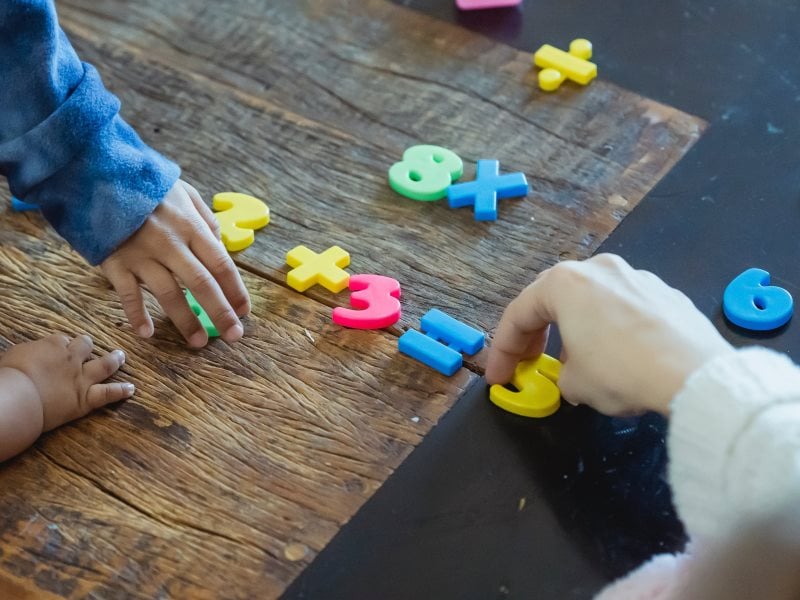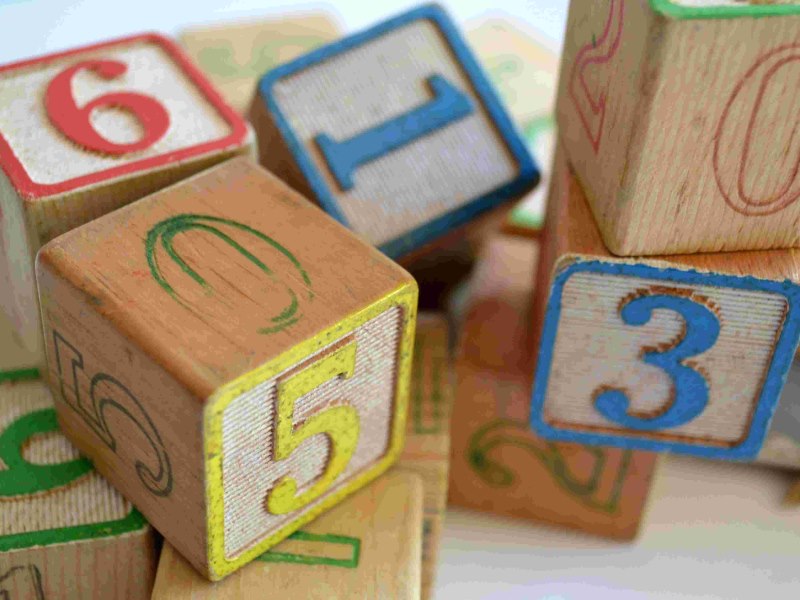 For all readers, vocabulary knowledge and reading comprehension are strongly correlated (e.g., Davis, 1944, 1968; Thorndike, 1973). Without the proper vocabulary, no child can fluently read or understand any text at hand. At the same time, however, children can be taught to find meaning from text (even if words seem like nonsensical-jibberish, at first glance).
For all readers, vocabulary knowledge and reading comprehension are strongly correlated (e.g., Davis, 1944, 1968; Thorndike, 1973). Without the proper vocabulary, no child can fluently read or understand any text at hand. At the same time, however, children can be taught to find meaning from text (even if words seem like nonsensical-jibberish, at first glance).
To help your child, first start by building a daily reading practice with them. Then, try these comprehension strategies with your child, and see if it helps them build the necessary vocabulary for their reading level.
A. Check For Understanding:
Even as adult readers, there are times when we do not understand a word we read. However, as adults, we have certain strategies to help us understand the new word, or at least compensate for our lack of understanding.
For children, however, not understanding a word can be incredibly frustrating. In fact, after working so hard to learn all the letter sounds and sound out complex phonetics, many early readers overlook comprehension as unnecessary to the larger process of reading. Consequently, by the time such children reach the end of the story, they haven't managed to actually understand the text they set out to read.
How can you help your child with this?
During your daily reading practice, stop your child (at logical breaks -- between sentences, or paragraphs) and check for understanding- "Let's see if we understood what we just read:
- Who did we just read about?
- What happened?
- If your child is a more advanced reader, you can also ask
- When did it happen?
- Where did it happen?
- Why did it happen?
- How did it happen?
Modeling this behavior of stopping to check if you have understood the text (who the story is about, what is happening) will not only teach your child that it is important to understand anything and everything you read, but also how to do it by themselves.
B. Back Up and Re-Read
What happens when you check for understanding and you realize you don't understand? Well, you must back up and re-read the part you couldn't understand!
During your daily reading practice, if your child has difficulty answering the "who" and "what" when you check for understanding, teach them to back up and re-read slowly, and then check for understanding again.
Remember: strategies like 'Check For Understanding' and 'Back Up and Re-Read' may seem simplistic, but they are key to building a practice of understanding what you read.
C. Use Context Clues
Context Clues are hints that a writer uses to help readers understand unfamiliar words. Teach your child to look at the surrounding words / pictures to predict a word's meaning.
- Definitions:
Especially when reading leveled books, authors will build definitions directly into the sentence.
EX:
The arbitrator, the neutral person chosen to settle the dispute, arrived at her conclusion.
His emaciation, that is, his skeleton-like appearance, was frightening.
Look for these clues while reading: which means, that is, in other words, and appositive commas! - Look For Examples:
Many writers actually explain complex words with examples.
EX:
The decor, including fancy lights, beautiful paintings and unique furniture, made the house look stunning.
The animals feed on vegetation such as grasses, leafy plants, and shrubs.
Just look for the following key phrases: for example, like, in particular, such as, case in point, including, consists of, for instance - Synonyms (Restatement Clues): Often, an author restate a difficult word, with a simpler synonym!
EX:
A beaver uses its big front teeth to gnaw trees. These incisors continue to grow as they are worn away.
The heat from the intense sun rays was scorching. - Antonyms (Contrast Clues): Sometimes, an author will help us understand what a difficult word means by telling us what that word is not
EX:
Unlike animals that hunt during the day, nocturnal hunters must find their food in the darkness.
Beverly is compassionate, but her older sister is rude and uncaring.
Key word: but - Inference: Sometimes the author does not explain the meaning of a new word. But you can still check the text for some general or inexact clues to help you find the meaning!
EX:
After 1700, the Pueblos replaced cotton with wood as the most important textile.
The children were so fatigued from their day of play that they could hardly eat their dinner. They dragged their feet to the table and fell asleep early.
More than often enough, the author will provide enough clues in a text for your little reader to figure out the meaning of a new word. Just remind your child to not get frustrated when they come across an unfamiliar word. Rather, they should carefully search the surrounding words / sentences for clues to solve the mysterious meaning, just like a good detective would!
D. Use Word Parts To Determine Meaning Of Words
If your child is a more advanced reader, they may have encountered prefixes and suffixes.
When your child encounters a particularly confounding word, teach your child to try breaking the word down into more familiar parts. Then, see if they can use their prior knowledge, along with context clues, to deduce the meaning of a word.
For example: try the word antidisestablishmentarianism (it's the longest word in the English dictionary!). Can you / your child break it down?
- Anti-dis-establishment-arian-ism
- anti = against, dis = gives opposite meaning ; establishment = to create something ; arian = person who supports ___ ; ism = practice or belief
- Antidisestablishmentarianism = a person whose belief is against the disestablishment (removal) of ? [the Church of England (there was no clue for that)]
This, of course, is a more complicated example, but can your child use word parts to understand the word ceremonial? dissection? bicycle? unicycle?
The bottom line is, reading is an art! Teach your child to use every tool at their disposal to crack whatever nasty word is troubling them (many times, the clues can be hidden in the word itself)
E. Use Dictionaries/ Thesauruses / Glossaries:
Teach your child to take advantage of the myriad resources available to them! If they still can't figure  out a word's meaning through context clues or word parts, ask them to check a dictionary or thesaurus to find the definition!
out a word's meaning through context clues or word parts, ask them to check a dictionary or thesaurus to find the definition!
There are endless children's dictionaries available (online and physical) to help your child on their quest to solve the mystery of the unknown word.
If you carefully model / build this behavior of not ignoring difficult words, but rather looking them up and finding their meaning, you are showing your child how important it is to understand everything and anything they read, and you are teaching them how to do it, all on their own!
F. Tune in to Interesting Words:
While understanding a new word is incredibly important, it is only the first step. If your child is truly going to expand their vocabulary, they must use the new word in their speaking and writing until it becomes part of their accessible vocabulary.
Ask your child to tune into new words by not only understanding them, but adding them to their word collector (give them a small book where they can write all of the new interesting words they find).
Encourage your child to use the words from their word collector when they speak and write. Praise them when they do so, and teach them that this is a great practice to become a better reader!
Finally, you yourself should model this behavior for them. When you read a book, magazine, or newspaper, make it a point to tune into your own interesting words and discuss it with your child. Teach them that this is an important practice, for all readers ages 0-118!
Vocabulary and reading comprehension are inextricably linked. The more your child reads, the more new words they will confront, and get into the practice of comprehending -- no matter the effort.
Remember, a robust (or even grade-level) vocabulary cannot be built over night. It requires a daily reading practice, and incorporation of new words into their vocabulary, as well as exposure to 'adult' words, as they listen to your own conversations, TV shows, radio hosts, etc.
Make sure you, as a parent, put careful thought into how many new words you expose your child to, as well as the types of words / conversations you surround them with. After all, as Maryanne Wolf, renowned scholar, teacher, and literacy expert has attested, "the vocabulary of a child consistently read to from toddler age on, is vastly larger and more sophisticated than that of a five-year old who has not been read to. The ready-to child is much more reading-ready than the other, and that head start shows at every step of learning to read, marking those children not read to for very nearly certain disaster."
Sources
Behne, A. Parent Pipeline: CAFÉ Strategy: Back Up and Reread. [PDF]. Retrieved from http://www.spac.k12.pa.us/text/Reading%20Team%20-%20Susan%20Snyder%20&%20Clyde%20Snyder/Parent_Pipeline_~_Back_up_and_Reread%5B1%5D%5B1%5D.pdf
Behn, A. (2009). Parent Pipeline: CAFÉ Strategy: Check for Understanding. [PDF]. Retrieved from http://cowlishaw.ipsd.org/uploads/Parent%20Pipeline-Check%20for%20Understanding.pdf
Knutson, M. (2016). Using Word Parts to Determine the Meaning of Words. [Web]. Retrieved from https://www.education.com/lesson-plan/using-word-parts-to-determine-the-meaning-of-words/
Murphy, J. (2016). Guiding Students to Use Context Clues Independently. [Web]. Retrieved from http://astutehoot.com/guiding-students-to-use-context-clues-independently/
ReadingVine. What are the Different Types of Context Clues? [Web]. Retrieved from https://resources.readingvine.com/what-are-the-different-types-of-context-clues/
TeachThought Staff (2019). 7 Strategies For Using Context Clues In Reading. [Web]. Retrieved from https://www.teachthought.com/literacy/7-strategies-using-context-clues-reading/
TheDailyCAFE.com. The CAFE Menu. [PDF]. Retrieved from https://www.thedailycafe.com/sites/default/files/Conferring_Notebook_CAFE_Menu.pdf





